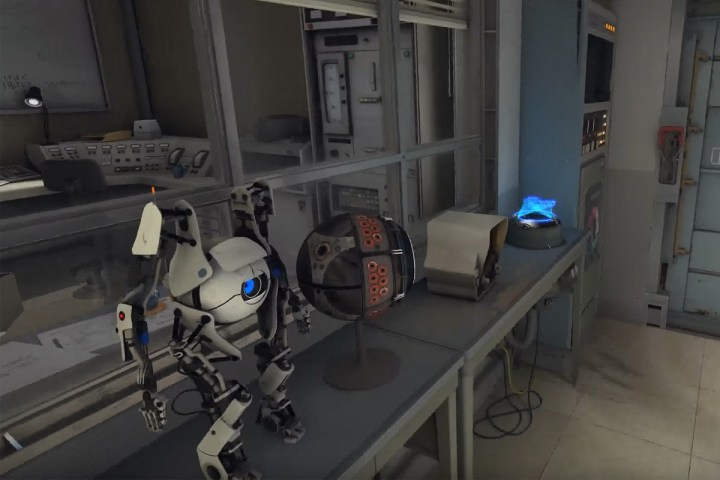
Although none of these mini-games will be full-blown experiences of the type many are hoping to enjoy when their Oculus Rift CV1 and HTC Vive headsets begin shipping in just a few weeks’ time, they will show off certain aspects of VR that Valve has been working on. Better yet, they’re all tied to Valve’s established Portal universe.
The Lab is set within a “pocket universe of Aperture Science,” we’re told, suggesting that the mini-games could be akin to the Aperture Robot Repair demonstration that Valve has used to showcase the room-scale movement and hand-tracked controllers of the Vive headset at shows for the past year or so.
The best part of the announcement though, is that all of the mini-games and experiences Valve releases as part of this development will be made available to all Steam users “this spring.” While presumably the room-scale and controller-tracked games and experiences will require an HTC Vive to experience fully, it’s possible that the Oculus Rift CV1 will also be supported by some of the demos too.
The fact that The Lab is based within the Aperture world has led some fans to begin speculating that this means Valve may also show off a new Portal game either at GDC or around the time that the Vive begins shipping at the start of April. There has been no discussion from Valve in that regard, but it hasn’t stopped people from getting excited.
As if they weren’t excited enough about VR as it is.
Editors' Recommendations
- This new VR headset beats the Vision Pro in one key way and is half the price
- New leak reveals exactly how Apple’s VR headset will work
- This modular SteamVR controller fixes a major problem with VR controllers
- We finally might know what Apple will call its AR/VR headset
- Meta calls prototype VR displays ‘as vivid and realistic as the physical world’




